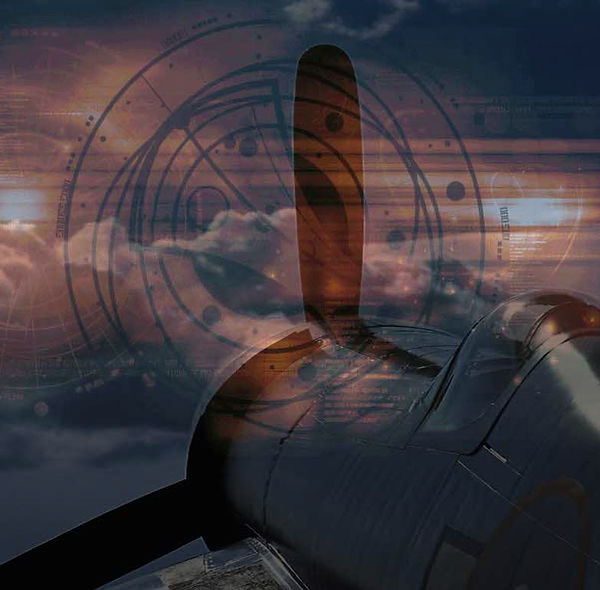
Hold your pointer on a tab in the menu on top of the page to view and handle the sub menus.



Photo F4U Corsair Assembly Facility
VOUGHT
Despite the Great Depression, Vought continued to design and manufacture aircraft at a growing pace. Soon after Chance Vought's death in 1930, the company moved its operations to East Hartford, Connecticut.
Under the Air Mail Act of 1934, United Aircraft and Transportation Corp.was forced by law to divide its businesses, resulting in Boeing Aircraft, United Airlines, and the United Aircraft Corp, of which Vought was a part.
In 1939 United Aircraft moved Vought to Stratford, Connecticut where their Sikorsky division was located and renamed the merged divisions Vought-Sikorsky Aircraft.
Chief Engineer Rex Beisel began in 1938 to develop the XF4U, recognized by its distinctive inverted gull wings. After its first flight in 1940, thousands of F4U Corsairs were produced for the Navy and Marines in World War II.
By the end of its production in 1952, Vought, Goodyear, and Brewster had all produced the Corsair fighters.
Vought was reestablished as a separate division in United Aircraft in 1942.
In postwar 1949, Vought moved operations to Dallas, Texas where the former North American Aviation "B" plant was located. Initiated by the Navy, who feared having their two main aircraft manufacturers located on the East Coast posed an unnecessary risk,
Vought moved 27 million pounds of equipment and 1300 employees in 14 months, a record breaking industrial move at the time.
In 1954, the company fully separated from United Aircraft and became the independent Chance Vought Aircraft Inc.
GOODYEAR
In 1916, the Goodyear Tire and Rubber Company purchased land near Akron, Ohio, to build a plant that could produce zeppelin aircraft. In 1917, the main Goodyear Company created a subsidiary known as the Goodyear Zeppelin Company to manufacture the zeppelins.
This company was the precursor to the Goodyear Aircraft Corporation. That same year, the firm received a contract from the federal government to manufacture nine zeppelins for the United States military during World War I. Unfortunately for the company, its manufacturing facilities were not complete in 1917, so Goodyear completed the first airships inside of a large amusement park building in Chicago, Illinois.
During World War II, the company, now known as the Goodyear Aircraft Corporation manufactured 104 airships for the military at its Akron facility.
The firm also built F4U Corsair planes for the United States Navy. When Goodyear created the Goodyear Aircraft Corporation in 1939, this branch of the company employed just thirty workers. With World War II's outbreak, by 1942, the Goodyear Aircraft Corporation consisted of thirty-five thousand employees.
BREWSTER
The Brewster Aeronautical Corporation was a North American defense contractor that operated from the 1930s until the end of World War II.
It started existence as an aircraft division of Brewster & Co., a company that originally sold carriages and had branched into automobile bodies and airplane parts. In 1932, James Work, an aeronautical engineer, bought the division for US$30,000 and created the Brewster Aeronautical Corporation. Brewster started out making seaplane floats and wing panels, but with the hire of chief engineer Dayton Brown it embarked on its own designs. It operated three aircraft plants, at the Brewster Building in Long Island City, New York, Newark, New Jersey, and, in 1941, in Warminster Township, Pennsylvania, which was then known as NAS Johnsville.
During WWII it became apparent that Brewster was mismanaged. The company had grown from a relatively minor aircraft parts supplier to a fully-fledged defense giant in only a few years. Brewster ranked 84th among United States corporations in the value of World War II military production contracts. Jimmy Work had hired Alfred and Ignacio Miranda as the company salesmen. They had been involved in frauds, spending two years in prison for selling illicit arms to Bolivia, and had over-promised Brewster production capabilities to customers.
As WWII had swelled the defense industries, the quality of the newly hired work force was inferior in skills and often motivation, and the work was plagued by illicit strikes; even outright sabotage was suspected. The Navy installed George Chapline as president of the company, easing out Jimmy Work, in the hopes of speeding up production, but then in early 1942 Jimmy Work regained control, just in time to be sued for $10 million for financial misdeeds. On April 18, 1942 the Navy simply seized Brewster and put the head of the Naval Aircraft Factory, G.C. Westervelt, in charge. In mid-May a new board of directors was appointed by the Navy, with Brewster making the F3A-1 Corsair under licence.
When the Navy cancelled Brewster's last contract, for assembly of the Corsair, on July 1, 1944, the company was in serious trouble. In October, after reporting a large loss, the management decided to shut down the company, and on April 5, 1946, the Brewster Aeronautical Corporation was dissolved by its shareholders.









A circa 1942-43 aerial-view looking north at the Brewster plant at Warminster

Circa 2002-2005 aerial-photo looking north at the former Brewster Aircraft factory

Sikorsky - Vought aircraft plant at STRATFORD in Connecticut

Goodyear Aircraft Corporation near AKRON in Ohio














































The Corsair was built in three plants during the war, initially by Vought-Sikorsky in the plant at Stratford, Connecticut. Goodyear Tire & Rubber in Akron, Ohio, was granted license production and finished building its first Corsair the FG-1 in February 1943.
In 1942 the Brewster Car and Aircraft Company of Long Island City, New York, was in financial trouble and was seized by the U.S. Navy on April 18 ,1942. The Navy assigned Corsair production to Brewster, which began completing F3A-1 Corsairs.
Production difficulties contributed to the U.S. Navy refusing to send Brewster built Corsairs to combat, production was canceled on July 1, 1944. The company was shut down shortly after.
Credit to US National Archives, US NAVY, USMC, Vought, NACA, San Diego Air & Space Museum Archives (SDASM), Fleet Air Arm, IWM (Imperial War Museums), Wikimedia Commons, National Library of New Zealand,Library of Congress.